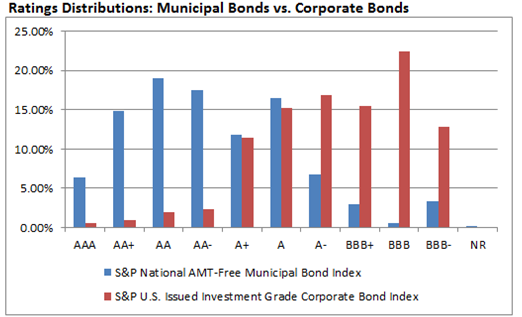Bond Ladder ETFs are providing a unique solution for managing duration risk. These ETFs, now available for the municipal, corporate and high yield sectors, enable more precise control over duration risk than previous fixed income ETF offerings. Moreover, they have performance benefits relative to traditional fixed income index funds and ETFs if the rising rate and steep slope yield curve environment persists.
In addition to delaying the onset of tapering, the September FOMC (Federal Open Market Committee) meeting and communications have clarified the timing of any future hikes of the Federal Funds rate. The message is clear – we should remain at nearly zero for an extended period of time, perhaps years.
Absent any potential data-dependent alterations, the short end of the taxable yield curve should remain anchored. Therefore, most bond market yield curves should remain steeply sloped. Returns to taking on additional duration risk should remain elevated. But, as we’ve learned since last July (and in 1994 and 2004), long rates accelerating higher can prove immensely damaging to principal. Taking on additional duration risk from holding longer maturity debt can be risky.
This environment emphasizes that investors need to make suitable and precise choices for duration risk. Unfortunately, most bond market index funds and ETFs attempt to match duration to a bond index. In a rising interest rate environment, these funds have to continually add duration (longer bonds) in order to match their benchmark duration and replace expiring or called shorter issues. Unfortunately, the bonds they add to the index are also the bonds where the duration risk is concentrated. These funds cannot “roll down the curve”, or capture the duration risk premium as average maturities decline with time.
Several ETF sponsor firms offer a new class of fixed income fund that only invests in selected maturities. In these bond ladder ETFs, all of the underlying investments are concentrated in a selected maturity window (e.g., 2018 investment grade corporates or 2017 municipals). This new type of bond fund offers the ability to tailor duration risk and sector exposure to match risk and return objectives.
Since bond ladder ETFs are designed to mature, you can stack them together in an arrangement that resembles a traditional, but more diversified, bond ladder (hence the term Bond Ladder ETFs). By stacking the ETFs, you own multiple highly-diversified baskets of underlying bonds. Just like equity ETFs, one of the prime advantages of fixed income ETFs is diversification. Since the ETFs trade like equities, an investor (particularly smaller advisors, institutions and firms) do not need to deal with the headaches of individual bond trading. Trading odd lots is a treacherous and frequently unprofitable undertaking for most smaller investors.
In this steep yield curve environment, the Bond Ladder ETF structure offers a unique solution to adding diversification to the traditional bond ladder. Having precise control over sector exposure and duration risk could prove rewarding if the current fixed income dynamic looks likely to persist.
S&P Dow Jones Indices is an independent third party provider of investable indices. We do not sponsor, endorse, sell or promote any investment fund or other vehicle that is offered by third parties. The views and opinions of any third party contributor are his/her own and may not necessarily represent the views or opinions of S&P Dow Jones Indices or any of its affiliates.
The posts on this blog are opinions, not advice. Please read our Disclaimers.






